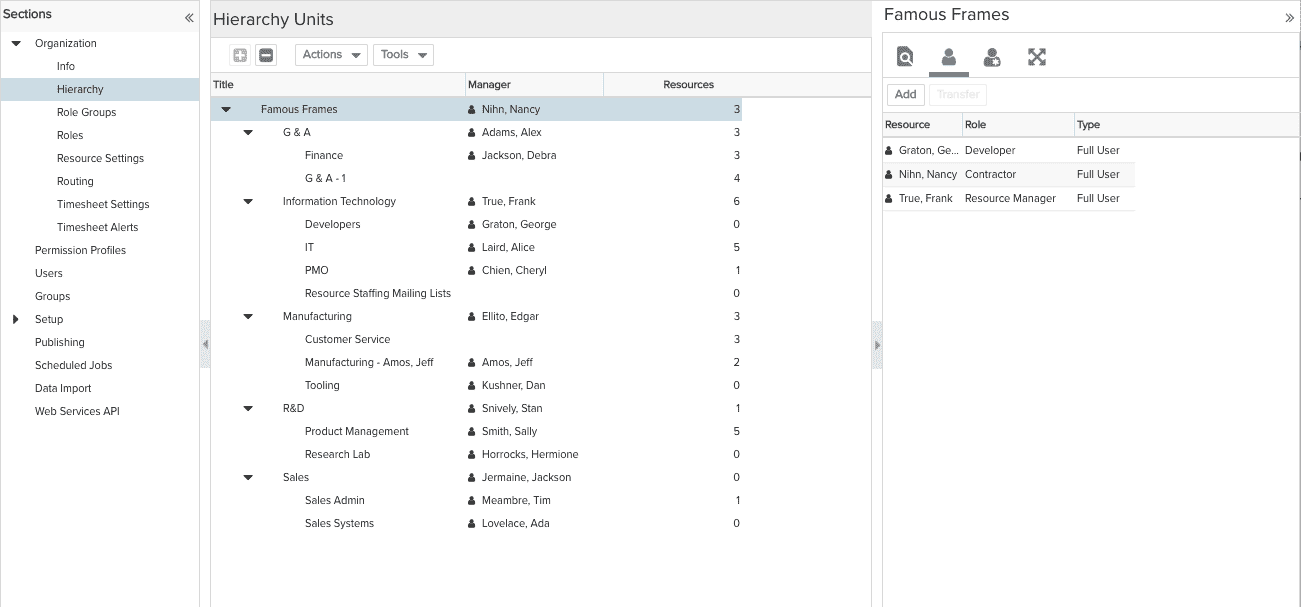About the Organization hierarchy
The Organization Hierarchy is a tool for organizing users and creating a management structure in the PPM Pro system. The hierarchy reflects your organization structure, and is comprised of units (like departments), managers, and unit members/resources, each of which is defined below.
The hierarchy works in conjunction with project and portfolio permission profiles - you can grant access via units to these entities (see Association Profiles). In addition, the hierarchy is used to grant staffing permissions on the resources in the hierarchy. Users with the appropriate staffing permissions need a pool of users from which to staff. The hierarchy provides a modular way to identify a group, or groups of resources from which to create this pool. See About Profile-Based Permissions and Creating Staffing Profiles for more information.
Note: In the past, resources were required to belong to a Division - this is no longer the case. Instead, resources are required to belong to a unit. The Organization hierarchy should be the mechanism for laying out your organizational structure; if you do not create your unit structure before importing your users, then all users will be assigned to the root of the hierarchy, and you can reorganize them after you create the units. In addition, resources are no longer required to have an Immediate Supervisor. Instead, the Unit Manager of the unit to which the resource belongs is the resource's manager. Both Units and Unit Managers are integrated with the permissions model; immediate supervisor and Divisions are legacy entities. You can still use them, but they are not designed to work with permissions.
Unit
The building blocks of the hierarchy are called "units". A unit is a group of people who work together. Units are named and have a manager. The manager is a member of the unit for some purposes, and a member of a higher level unit for other purposes. Units are often children of other units, and they may have child units themselves.
Take, for example, the Product Marketing unit. It has a manager, the Director of Product Marketing. It's also part of a larger unit called Marketing. The Marketing unit also has a manager, the VP of Marketing. The Director of Product Marketing is also a member of the Marketing unit, as are all other members of the Product Marketing unit.
Manager
The manager of a unit is the person who directs the unit. The manager of a unit is often the "Immediate Supervisor" of the non-manager direct members of the unit.
Unit Member
A member of a unit is a resource or user who belongs to the unit. Typically, the members of child units are also considered members of the parent unit by inheritance. Usually the manager of the unit is the "Immediate Supervisor" of non-manager unit members. Note, a unit member may be a manager of a child unit. You can only be a member of one unit.
The screenshot below displays an example hierarchy.


